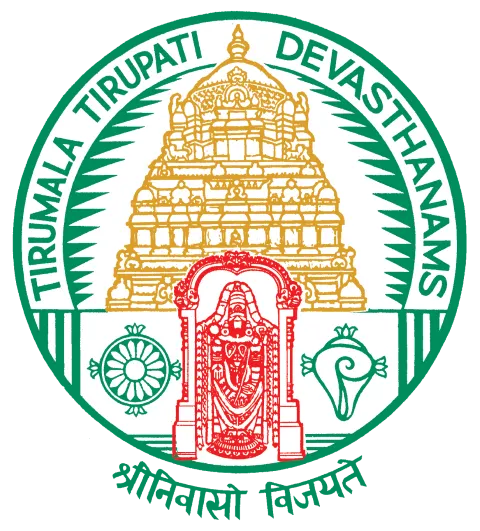Employees in a government office of Palamaner mandal in Chittoor district of Andhra Pradesh quickly sprang into action after their 21-year-old colleague Latha (name changed) attempted suicide on a wintry morning in 2023. They rushed her to the government hospital in the district headquarters 45 kilometres away, praying they had not acted too late.
The next day, they learned that their prompt efforts fell short in making up for the travel time and the delayed critical healthcare Latha had received.
Despite undergoing treatment for half a day, she showed no signs of improvement. The hospital staff did not seem confident about her chances of survival. Still, a ward boy there suggested they shift her to a private hospital in Tirupati, 75 kilometres away.
Recollecting the harrowing experience, Latha’s brother, Harish, says: “We admitted my sister to a private hospital in Tirupati for two days and paid ₹70,000 worth of medical bills only to hear the doctors say that they did everything they could, but my sister showed no improvement.”
“We were in a state of despair when a senior professor at S.V. University suggested we immediately admit my sister to Christian Medical College (CMC) Hospital in Vellore, Tamil Nadu, which is, again, 110 kilometres away. There, luckily, she recovered, and it took her one and a half years to return to her normal life. We paid ₹3 lakh at CMC Hospital,” he says.
“But, while we endured this ordeal, our family lost confidence in our healthcare system and our hospitals—both private and government-run ones,” Harish concludes.
Despite the suffering, Latha is among the fortunate few in the Chittoor district, especially from the villages between Chittoor and Kuppam Assembly constituencies, who managed to survive despite such severe delay in administering critical healthcare.
A junction of neglect
Chittoor, the southern-most district of Andhra Pradesh, and the Kuppam region of the district lies on the tri-State border of Andhra Pradesh, Tamil Nadu and Karnataka. Despite occupying a vital border region, the people here continue to ache for accessible emergency and critical healthcare services as the nearest government-run superspeciality hospital, Sri Venkateswara Institute of Medical Sciences (SVIMS) of the Sri Venkateswara Ramnarain Ruia Government General Hospital (Ruia Hospital), is located 200 kilometres away. However, the few who can afford it prefer the CMC Hospital, which is over 116 kilometres from Kuppam and 40 kilometres from Chittoor.
Meanwhile, the only medical college in Kuppam town, the PES Institute of Medical Sciences and Research (PESIMSR), a private institute, while offering emergency services to patients from over six mandals of Kuppam and neighbouring Palamaner Assembly constituencies, is perceived as a financial burden by the rural masses in the region.
Unlike a government hospital, this institute charges fees from the patients right from the stage of issuing an outpatient card. “In critical cases, the hospital demands payment in advance even as they ask you to be ready to shift the patients to hospitals in Bengaluru (nearly 120 kilometres away) upon referral,” says Lakshmi Narayana, a journalist from Kuppam.
Mr. Narayana cites a recent incident to support his statement. He explains, “A couple of months ago, a man injured during a bull-taming sport called Pasuvula Panduga, held in a remote village, was rushed to PES Hospital. From there, he was transferred to Kolar, which is 60 kilometres away in Karnataka, and then to Bengaluru, where he was ultimately pronounced dead. The doctors reported that the cause of death was significant blood loss.”
On the other hand, some say that most faculty of the PESIMSR come from Bengaluru and are unavailable on weekends and holidays. This has been the biggest hindrance to the facility’s provision of emergency services, forcing the public to opt for private medical practitioners (PMPs) or hospitals in Bengaluru or Vellore, they opine.
A view of the government district hospital in Chittoor.
| Photo Credit:
ARRANGEMENT
Survey revelations
Given the circumstances, Apollo Hospitals Educational and Research Foundation (AHERF), which took over the government district hospital in Chittoor five years ago under the clinical agreement procedure, has prepared a document advocating the urgent need for a super speciality intervention in the district’s health sector.
The document highlighted that the district hospital referred 514 trauma cases to higher medical institutions in Tirupati, Chennai, Vellore, or Bengaluru in the months of September and October of 2022 alone. During the same period, 939 cardiac, 52 neurology, and 35 nephrology cases were referred outside the district during the same period, according to the report.
The other major hospital in the district, the Kuppam government area hospital, a 350-bed facility, also refers 80% of emergency cases to higher institutions, say sources.
Similarly, the government hospital in Bangarupalem, 30 kilometres from Chittoor, abuts a National Highway and is also close to the Mogili ghat road, an accident hotspot. However, despite its strategic location, the hospital limits itself to providing first aid to the victims and usually refers critical cases to CMC Hospital or SVIMS Hospital. However, the high number of casualties from this segment of referrals is hard to ignore, especially when the cases are time-sensitive.
K. Dhanasekharan, chairman of Chittoor-based NGO, Rural Organization for Poverty Eradication Services (ROPES), stresses the contribution of CMC Hospital to providing critical emergency healthcare to the patients of this region by sharing his experience about a patient suffering from a critical gynaecological problem. “I referred her to CMC Hospital, along with a request letter seeking liberal concession in medical and surgical intervention by considering her economic background. They didn’t charge one rupee from her,” he said.
In the absence of a superspecialty hospital or a national-level medical institute in the region, CMC Hospital has become the destination for critical and trauma cases, especially for the poor and middle-class families in Chittoor and Tirupati districts. “If a corporate hospital charges ₹1,000, CMC Hospital charges only ₹600 while providing world-class services,” he said.
PMP menace
Regardless, a popular opinion among the government and private doctors is that barring the accident cases, most critical cases from the rural areas of Chittoor, particularly from Bangarupalem to Kuppam, are the result of the unwarranted intervention of the PMPs here.
“They [PMPs] prescribe heavy antibiotics, sometimes from sub-standard brands, even for minor ailments. This causes the patients to develop antibiotic resistance or causes damage to their vital organs. It is segments of such patients that turn out to be emergency cases in government hospitals,” said a senior government physician in Kuppam.

“There are two kinds of PMPs [private medical practitioners] in Kuppam: those who contribute to the rising number of emergency cases, and those who genuinely make referrals to higher institutions”Lakshmi NarayanaJournalist, Kuppam
Mr. Narayana in Kuppam puts it, “There are two kinds of PMPs in Kuppam: those who contribute to the rising number of emergency cases, and those who genuinely make referrals to higher institutions.”
Over a hundred PMPs are said to be practising in the region, and more than half of them are from the neighbouring Tamil Nadu. “They started practising here after severe restrictions were placed on them in their State,” adds Mr. Narayana.
District Medical and Health Officer (DM&HO) D.T. Sudha Rani concurs with the popular opinion that PMPs are a menace that needs to be checked.
She, however, points to how the lack of a superspecialty hospital available in Chittoor is making the public reach out to those in Bengaluru, Chennai, Vellore, and Tirupati, especially in the wake of the “improved socio-economic conditions of the people here and their ability to afford health insurance policies.”
“At the government hospitals, we do our best to sensitise the public about preventive medicine and refer patients to higher institutions only after prudent consideration. The notion that private hospitals are leading providers of quality medical care is a fallacy,” Dr. Rani avers.

“All efforts will be made to bring advanced medical facilities to Chittoor with the National Health Mission funds. I am pursuing a proposal to set up a trauma care centre and increase the number of dialysis centres in the district.”Daggumalla Prasada RaoMember of Parliament, Chittoor
Member of Parliament from Chittoor, Daggumalla Prasada Rao, a staunch advocate for establishing a superspeciality hospital in the rural district of Chittoor, assures, “All efforts will be made to bring advanced medical facilities to Chittoor with the National Health Mission funds.” Furthermore, he says, “I am pursuing a proposal to set up a trauma care centre and increase the number of dialysis centres in the district.”
Meanwhile, death continues to linger on the impassable miles between the accident spots and the healthcare centres here.
Murugesh, 40, who lost his 28-year-old brother to a bike accident on the Mogili ghat road near Bangarupalem last year, recalls how his family transferred his brother from one hospital to another, for over 100 kilometres, ultimately losing him just 10 kilometres away from SVRR Hospital in Tirupati. He asks, “What killed my brother: the accident, the ill-equipped community health centre, or that we are cast away here without good hospitals?”
(Those experiencing suicidal thoughts or emotional distress may seek help by dialling 100)
Published – May 02, 2025 09:49 am IST
Anurag Dhole is a seasoned journalist and content writer with a passion for delivering timely, accurate, and engaging stories. With over 8 years of experience in digital media, she covers a wide range of topics—from breaking news and politics to business insights and cultural trends. Jane's writing style blends clarity with depth, aiming to inform and inspire readers in a fast-paced media landscape. When she’s not chasing stories, she’s likely reading investigative features or exploring local cafés for her next writing spot.





